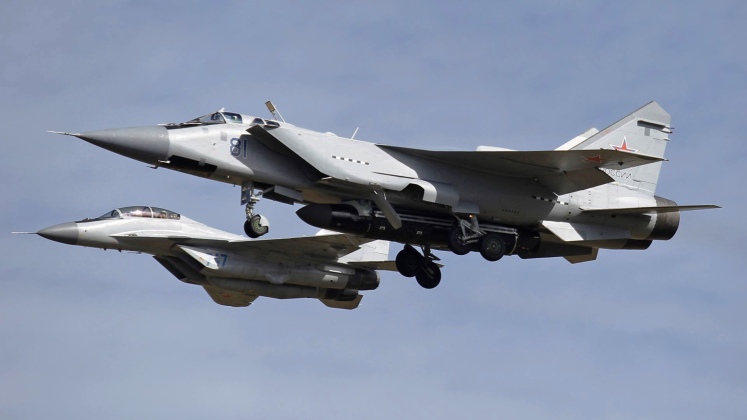News
Russia to Unveil New MiG Jet Capable of Launching Spacecraft at Next Week’s Army 2022 Show – Reports
Russian state media outlet TASS has announced that the new MiG-31I jet will feature in the Army 2022 international military technical forum, which is scheduled to run from August 15-22 and has traditionally featured some of the country’s most advanced weapons systems for display. The aircraft will appear alongside the MiG-31BM/BSM Foxhound interceptor from which it is derived, and of which over 100 are in service in the Russian Air Force. The new Foxhound variant was reportedly designed to be able to launch small spacecraft into orbit, providing a unique new capability to the Russian fleet.
The MiG-31 is the heaviest class of tactical combat jet operational anywhere in the world, and its long range, high payload and unmatched speed and operational altitude have long made it an ideal platform for launching both satellites and anti-satellite weapons, Although work on an anti satellite warfare variant began in the 1980s as the MiG-31D, before ending when the Soviet Union collapsed, work resumed in the mid 2010s with a Foxhound armed for anti satellite warfare first seen in 2018. The MiG-31’s airframe has also been used to develop what is in many respects the world’s most potent strike fighter, the MiG-31K, which entered service in late 2017 and carries the Kh-47M2 hypersonic ballistic missile with a Mach 10 speed and 2000km engagement range. The class saw its first combat in 2022 striking targets near NATO territory in Ukraine.

Following on from the MiG-31K and the revived anti satellite variant, which may still be designated MiG-31D, the MiG-31I will further expand the range of roles Foxhound airframes in Russian service are capable of fulfilling. It could also potentially increase foreign interest in the MiG-31, both in Kazakhstan which currently operates the class and for new clients with their own space programs, with the aircraft potentially having civilian as well as military applications. The MiG-31’s airframe has no peer competitors abroad in terms of its carrying capacity, size, speed or altitude, with Russia increasingly capitalising on its potential to partly compensate for the lack of clean sheet post Soviet aircraft designs in the country’s fleet.
The MiG-31 interceptor fleet has also received considerable upgrades beginning in the early 2010s, with situational awareness revolutionised and the aircraft having a much longer ranged standard armament than any other fighter or interceptor – the R-37M with a 400km engagement range and large 60kg warhead. New features such as compatibility with new defensive infra red missile classes have continued to be integrated indicating a high priority allocated to the fleet’s capabilities, with Foxhounds depended on to guard particularly sensitive positions such as Kaliningrad, the Arctic and facilities in Syria. With the MiG-31’s immediate successors the MiG-31M and MiG 702 both having been cancelled during the 1990s due to a lack of funds, the former despite development having been completed, a new successor is currently under development under the PAK DP program. Considering the growing range of roles being assigned to the MiG-31 fleet, however, Foxhounds may remain in service well into and perhaps beyond the 2030s for ballistic missile delivery and space warfare regardless of whether interceptor variants are replaced.












